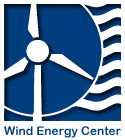Despite public opinion that generally supports the use of wind turbines as a sustainable form of generating electricity, important segments of the population, especially those who live near them, oppose the technology, often for aesthetic and environmental reasons. Sometimes characterized as a NIMBY phenomenon—Not In My Backyard—this attitude wins political support, such that some locales (as my state, Virginia) sport no utility-scale wind generators. But maybe other, unarticulated reasons for such opposition exist, such as a long-experienced conflict between rural and urban interests. Even less verbalized, some people may oppose wind turbines because of the technology’s visibility, which puts it in contrast to the generally invisible (and therefore less objectionable) form of electricity production from giant, but centralized and out-of-the-way fossil fuel and nuclear power plants.
On the other hand, many people in Midwestern farming communities have enthusiastically welcomed placement of the renewable energy machines on their property. In fact, their acceptance has spurred creation of a neologism mocking the NIMBY phenomenon—namely the PIMBY (“Please in my backyard”) approach. To be sure, farmers earn lucrative fees for allowing the huge turbines to be built on their land, but even those who obtain no economic gain support them as well. Perhaps the PIMBY phenomenon in the rural Midwest, along with acceptance and widespread use of complex technologies in general, constitutes only the most recent expression of an historical process of farmers forming an ultramodern identity, one that still goes largely unappreciated by relatively backward city residents.
In this talk, I draw on work I’ve conducted with two colleagues (Benjamin Sovacool on the NIMBY effect and Joshua Brinkman on the PIMBY phenomenon) to describe unarticulated reasons for people’s feelings toward wind turbines. We argue that the concealed features of technologies and how people incorporate them into their lives helps us understand both NIMBY and PIMBY concerns. By revealing the previously invisible, we hope to offer practical insights to policymakers and energy analysts as well as to social scientists.
SPEAKER BIO
Richard Hirsh is a professor of History of Technology and Science & Technology Studies at Virginia Tech. His academic background is unusual, since he holds a Master's degree in Physics and a Ph.D. in History of Science from the University of Wisconsin-Madison.
Though previously writing about astronomy performed from outer space (published as Glimpsing an Invisible Universe in 1983), Richard turned his attention to the recent history of electric utilities. In 1989, he published Technology and Transformation in the American Electric Utility Industry, a book that describes the technological, managerial, and cultural reasons for the industry's problems of the 1970s. He has also worked as a consultant for the Pacific Gas and Electric Company, co-authoring a management history on the utility's "ACT-squared" energy-efficiency R&D project. In 1999, he published Power Loss: The Origins of Deregulation and Restructuring in the American Electric Utility System. He continues to publish and speak on policy-related issues dealing with electric power systems, working with engineers, scientists, and policy analysts at Virginia Tech and other universities. In an unusual twist for someone who focuses largely on contemporary policy-oriented concerns, Richard is writing a book on the largely neglected—but relatively successful—efforts to power up farms in the years before the federal government created the Rural Electrification Administration (in 1935).

